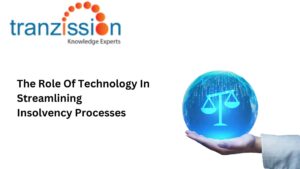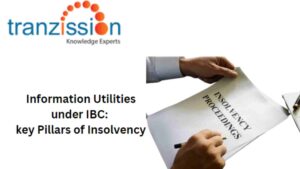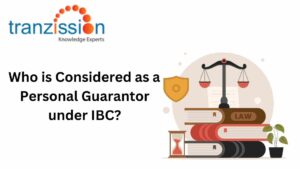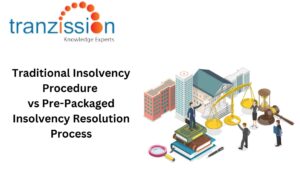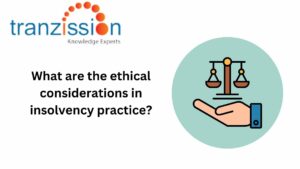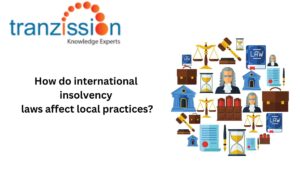
7 Difference Between Financial Debt and Operational Debt

Table of Contents
Understanding the insolvency process under the Insolvency and Bankruptcy Code, 2016, it’s crucial to grasp the difference between financial debt and operational debt. The core distinction lies in the nature of the debt, which determines the rights, roles, and responsibilities of the creditors. Financial creditors hold a significant influence, particularly in corporate insolvency resolution and liquidation proceedings, as seen through voting rights and claim priority. Operational creditors, however, have different levels of influence. Recognizing these differences helps insolvency professionals craft more effective resolution plans and optimize debt recovery and liquidation procedures.
Differences Between Financial and Operational Creditors
| Aspect | Financial Creditors | Operational Creditors |
| Meaning of the term “debt” | “Financial debt” is defined under section 5(8), involves the any obligations to pay money borrowed | “Operational debt” is given under section 5(21), from the debt of supply of goods or services, employment, government dues. |
| Voting share in CoC meetings | Have voting share based on the proportion of financial debt | Do not have voting share, unless permitted by the CoC |
| Initiation of CIRP | Can be done directly under section 7 | Can be done directly under section 9 or indirectly through demand notice under section 8 |
| Appointment of IRP | Have the right to appoint IRP | Do not have the right to appoint IRP |
| Constitution of CoC | Primarily constituted of financial creditors | Do not form the CoC, except when the claims extend a particular limit |
| Submission of Financial Information | Must be submitted to the information utility (IU), to guarantee the availability of data regarding financial debts. | Must submit their claims, generally not recorded or submitted to the IU |
| Priority in Repayment during liquidation (section 53, IBC) | Financial creditors have the highest priority | Below secured financial creditors, above equity holders |
What is a Financial Creditor?
A financial creditor is defined under section 5(7) Insolvency and Bankruptcy Code, 2016 (hereon forward known as “the IBC”): means any person to whom a financial debt is owed and includes a person to whom a such debt has been legally assigned or transferred to. The financial creditor has a major role in the corporate insolvency resolution process (CIRP) as it forms the Committee of Creditors (CoC) as per section 21(2) of IBC.
Types of Financial Creditors
Under section 53 of IBC, there are two types of financial creditors – secured financial creditors and unsecured financial creditors. Secured financial creditors have security interest over the corporate debtors assets, for instance, banks that provide term loans or financial institutions holding security interest.[1] Unsecured financial creditors are individuals who provide loans without security or any bondholders that have no set collateral.[2]
Rights and Remedies of Financial Creditors
(i) Right to initiate the insolvency process:
Under section 7(1) of the IBC can initiate the CIRP against the corporate debtor when a default has occurred by making an application to the National Company Law Tribunal (NCLT) as under section 7(2).
(ii) Right to vote in the Committee of Creditors:
The CoC is made of all the financial creditors, specified under section 21(2) of IBC. The CoC plays an important role in the CIRP, as the resolution plan will be approved by the NCLT only if it has been approved by the CoC. As per section 21(3) of IBC, the voting share of a financial creditor is determined upon the basis of the financial debts that is owed to them.
(iii) Right to appoint the resolution professional:
As is established above, the CoC comprises of the financial creditor. The CoC, as stated per section 22(1) of IBC, has the right to appoint the resolution professional (RP) or replace the interim resolution professional by another RP by a 66% voting share.
(iv) Right to enforce security interest:
During the liquidation process under section 52(1), the secured creditor has the right to relinquish security interest or realise its security interest of the liquidator estate in case of any default.
(v) Right to participate in the resolution plan:
The financial creditor has the right to participate in the resolution plan by two ways, first, the financial creditors can participate through section 25(2)(h) of IBC in the process when RP is required to invite any prospective resolutioni applicants to submit the resolution plan. Second, when the 66% vote is required by the CoC for the approval of the resolution plan, before the consideration of it by the NCLT.
What is an Operational Creditor?
An operational creditor is defined under Section 5(20) of IBC, which means any person to whom an operational debt[3] is owed and includes any person to whom such debt has been legally assigned or transferred. An operational creditor is any individual or company that supply the goods and services to whom a debt arises from such services.
Types of Operational Creditors
The types of operational creditors can be implied from the nature of the operational debt under section 5(21) of IBC – suppliers of goods and services, employees and workmen, and government authorities. Suppliers of the good and services include service providers, suppliers of raw materials, vendors, or contractors. The next type of operational creditors include employees and workmen of the corporate debtor, which includes wages, unpaid salaries, bonuses, etc. The next type of operational creditor include government authorities, meaning any dues that are payable to the Central Government, State Government, or local authorities, this includes income tax dies, property taxes or any penalties imposed by the regulatory authorities.
Rights and Remedies of an Operational Creditor
(i) Right to serve demand notice:
The operational creditor has the right to send a formal demand notice to the corporate debtor if the good or services have not been paid for. After receipt of the demand notice, the corporate debtor has 10 days to dispute the debt by proving that currently, a legal dispute is going on, or to show the evidence, such as bank records or a cleared cheque, that the debt has already been paid.
(ii) Right to initiate the insolvency process:
Under section 9(1) of IBC, an operational creditor may file an application under the NCLT to initiate the CIRP along with the required documents such as, copies of the invoice demanding payment or demand notice, an affidavit, copy of the bank certificate that the debtor has not made the payment for the unpaid debt, or any other information that may be required by the Insolvency and Bankruptcy Board of India (IBBI),
(iii) Right to attend the Committee of Creditors meetings:
The operational creditors have the right to attend the CoC meetings as per section 24(3)(c) of IBC. However, it is limited in comparison with the financial creditors, as their voting share will be in consideration only if permitted by the CoC.
(iv) Right to be informed about the resolution plan:
The operational creditor may not influence the decisions of the CoC, the operation creditors have the right to be informed about the resolution to ensure that the operational creditors interests are addressed during the CIRP. For instance, under section 30(2)(b) of IBC, the RP should guarantee that the resolution plan reflects the debtors to the operational creditors that are not less than the amount that would have been received by them during a liquidation process.
(v) Right to receive the payment:
Upon the CoCs and NCLT approval of the resolution plan, the operational creditor has the right to receive payments as demarcated under the resolution plan as stated under section 30(2)(b). However, under section 24(4), the operation creditors do not have any right to vote in these meetings.
(vi) Right to file claims:
When the CIRP commences, the RP invites the claims from creditors by public announcement.[4] As per Regulation 7(1) of the Insolvency and Bankruptcy Board of India (Insolvency Resolution Process for Corporate Persons) Regulations, 2016, the operational creditors have to submit their proof of claims as per Form B of the Schedule. The proof of claims include, records available with the information utility, and other relevant documents such as a contract for supply of goods and services with the corporate debtor, an invoice demanding payment for goods and services, an order of the court or tribunal on the non-payment of any debt, and financial accounts.
(vii) Right to Appeal the Valuation of Claims:
The operational creditor has the right to appeal within 14 days to the NCLT if not satisfied with the valuation of claims determined by the liquidator as under IBC of section 42 . Taking for example, when the liquidator failed to inform the NCLT of the existence of an undervalued transactions.
(viii) Remedies of non-payment:
If the operational creditor fails to receive any payment, even after demand notice and after the resolution process, outside the reach of IBC, there are two methods that the operational creditor can take: file a petition for winding up under section 271 of the Companies Act or initiate a suit for recovery under the Code of Civil Procedure, 1908. However, the latter is a more time-consuming process in comparison to the procedure under the IBC.
Conclusion
By way of their voting rights during the CoC meetings, the financial creditors, have a substantial influence during the CIRP. As financial creditors comprise the CoC, financial creditors play a role in the approval of the resolution plan and the appointment of resolution professionals. However, operational creditors role is not as extensive as financial creditors as the basis of their claims are on good or services, employment authorities, etc. Both creditors initiate the insolvency duties , operational creditors have a more limited decision-making process and have less priority in the distribution of claims during liquidation. The roles of financial creditors and operational creditors are both important so that the interests of any party involved in the insolvency process are transparent.
FAQs
Can an individual be a financial creditor under IBC?
Yes, an individual can be a financial creditor. As per the definition given under section 5(7) of the IBC states that an “financial creditor” means ‘any person’, who is owed a financial debt, legally acquired, or transferred to the right to the financial deb
What is the basic difference between financial creditor and operational creditor under IBC, 2016?
The basic difference between the financial creditor and the operation creditor is the nature of the debt, as seen from the definition clause under section 5 of IBC. While on one hand, a financial creditor is owned the financial debt arising from either loans or financial transactions. In contrast, an operational creditor is owed an operational debtor arising from supply of goods or services transactions
What is the role of the Committee of Creditors in the case of Financial and Operational Creditors?
As per section 21(2) of IBC, the Committee of Creditors is comprising of financial creditors of the corporate debtor. The financial creditors have 75% voting rights in the decisions of the CoC, hence they have vote on key matters during the insolvency process, such as the approval of the resolution plan. On the other hand, an operational creditor has a role in the CoC only to the extent of the operational debtor owed by the corporate debtor to such creditor as per section 21(4)(b). Under this section, operational creditors are not part of the CoC, except when their debt exceed 10% of the total debt that is due from the corporate debtor.

